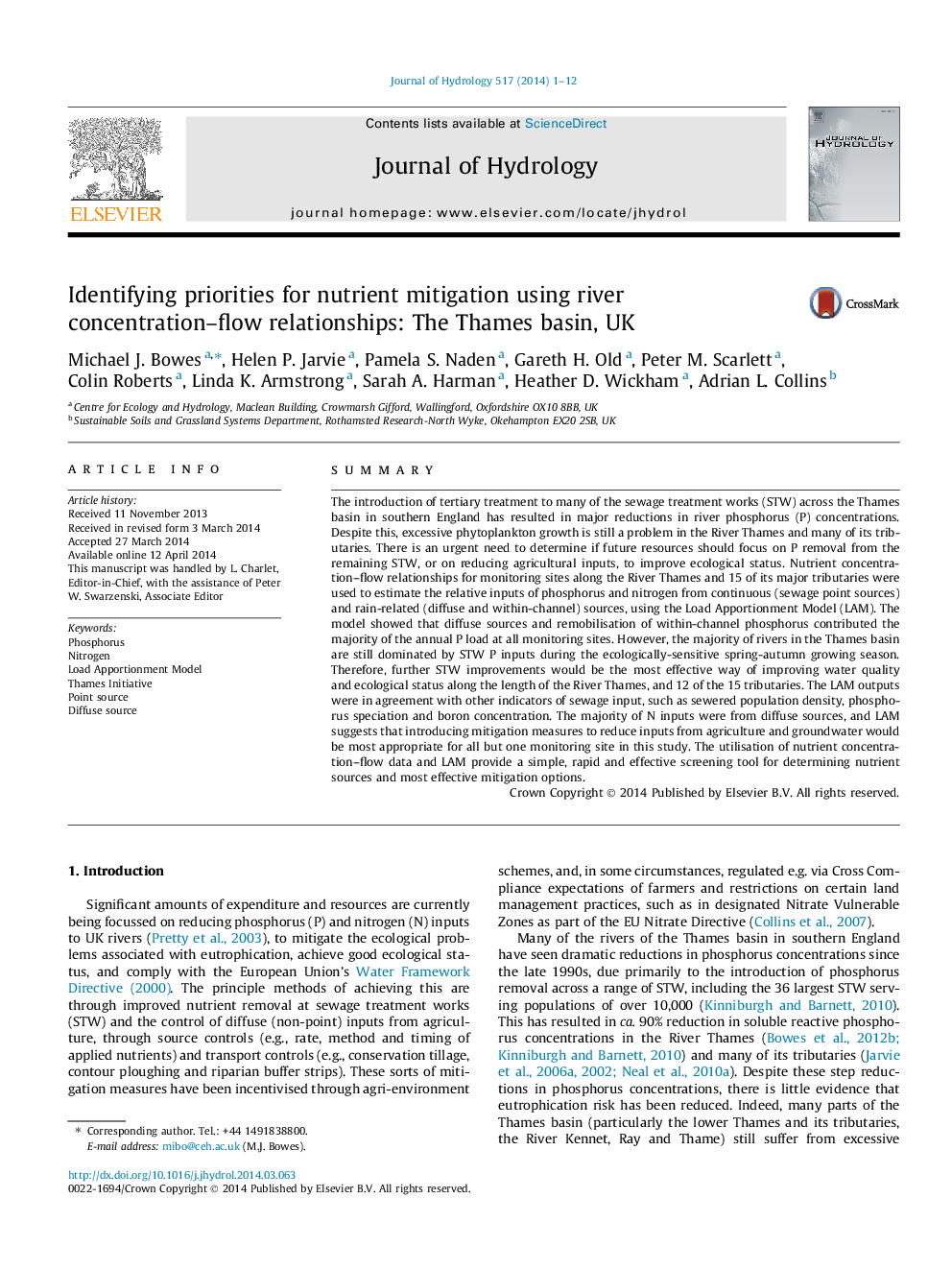| کد مقاله | کد نشریه | سال انتشار | مقاله انگلیسی | نسخه تمام متن |
|---|---|---|---|---|
| 6412893 | 1629931 | 2014 | 12 صفحه PDF | دانلود رایگان |

- Load Apportionment Model applied to multiple sites across the Thames basin, UK.
- Phosphorus load dominated by sewage inputs during growing season at most sites.
- Nitrogen load dominated by diffuse and groundwater inputs throughout year.
- Modelling shows need for further P removal from sewage treatment effluents.
- Model provides simple and rapid method to identify best mitigation options.
SummaryThe introduction of tertiary treatment to many of the sewage treatment works (STW) across the Thames basin in southern England has resulted in major reductions in river phosphorus (P) concentrations. Despite this, excessive phytoplankton growth is still a problem in the River Thames and many of its tributaries. There is an urgent need to determine if future resources should focus on P removal from the remaining STW, or on reducing agricultural inputs, to improve ecological status. Nutrient concentration-flow relationships for monitoring sites along the River Thames and 15 of its major tributaries were used to estimate the relative inputs of phosphorus and nitrogen from continuous (sewage point sources) and rain-related (diffuse and within-channel) sources, using the Load Apportionment Model (LAM). The model showed that diffuse sources and remobilisation of within-channel phosphorus contributed the majority of the annual P load at all monitoring sites. However, the majority of rivers in the Thames basin are still dominated by STW P inputs during the ecologically-sensitive spring-autumn growing season. Therefore, further STW improvements would be the most effective way of improving water quality and ecological status along the length of the River Thames, and 12 of the 15 tributaries. The LAM outputs were in agreement with other indicators of sewage input, such as sewered population density, phosphorus speciation and boron concentration. The majority of N inputs were from diffuse sources, and LAM suggests that introducing mitigation measures to reduce inputs from agriculture and groundwater would be most appropriate for all but one monitoring site in this study. The utilisation of nutrient concentration-flow data and LAM provide a simple, rapid and effective screening tool for determining nutrient sources and most effective mitigation options.
Journal: Journal of Hydrology - Volume 517, 19 September 2014, Pages 1-12